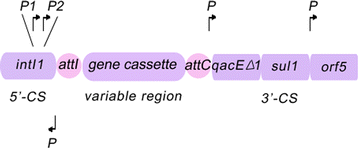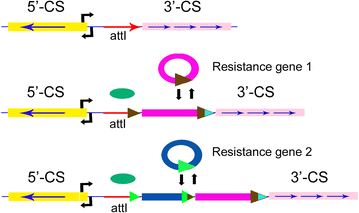Resistance integrons: class 1, 2 and 3 integrons
- PMID: 26487554
- PMCID: PMC4618277
- DOI: 10.1186/s12941-015-0100-6
Resistance integrons: class 1, 2 and 3 integrons
Abstract
As recently indiscriminate abuse of existing antibiotics in both clinical and veterinary treatment leads to proliferation of antibiotic resistance in microbes and poses a dilemma for the future treatment of such bacterial infection, antimicrobial resistance has been considered to be one of the currently leading concerns in global public health, and reported to widely spread and extended to a large variety of microorganisms. In China, as one of the currently worst areas for antibiotics abuse, the annual prescription of antibiotics, including both clinical and veterinary treatment, has approaching 140 gram per person and been roughly estimated to be 10 times higher than that in the United Kingdom, which is considered to be a potential area for the emergence of "Super Bugs". Based on the integrons surveillance in Guangzhou, China in the past decade, this review thus aimed at summarizing the role of integrons in the perspective of both clinical setting and environment, with the focus on the occurrence and prevalence of class 1, 2 and 3 integrons.
Figures



References
-
- You R, Gui Z, Xu Z, Shirtliff M, Yu G, Zhao X, Shi L, Li B, Su J, Li L. Methicillin-resistance Staphylococcus aureus detection by an improved rapid PCR assay. Afr J Microbiol Res. 2012;6:7131–7133.
Publication types
MeSH terms
Substances
LinkOut - more resources
Full Text Sources
Other Literature Sources
Medical
Research Materials
Miscellaneous

